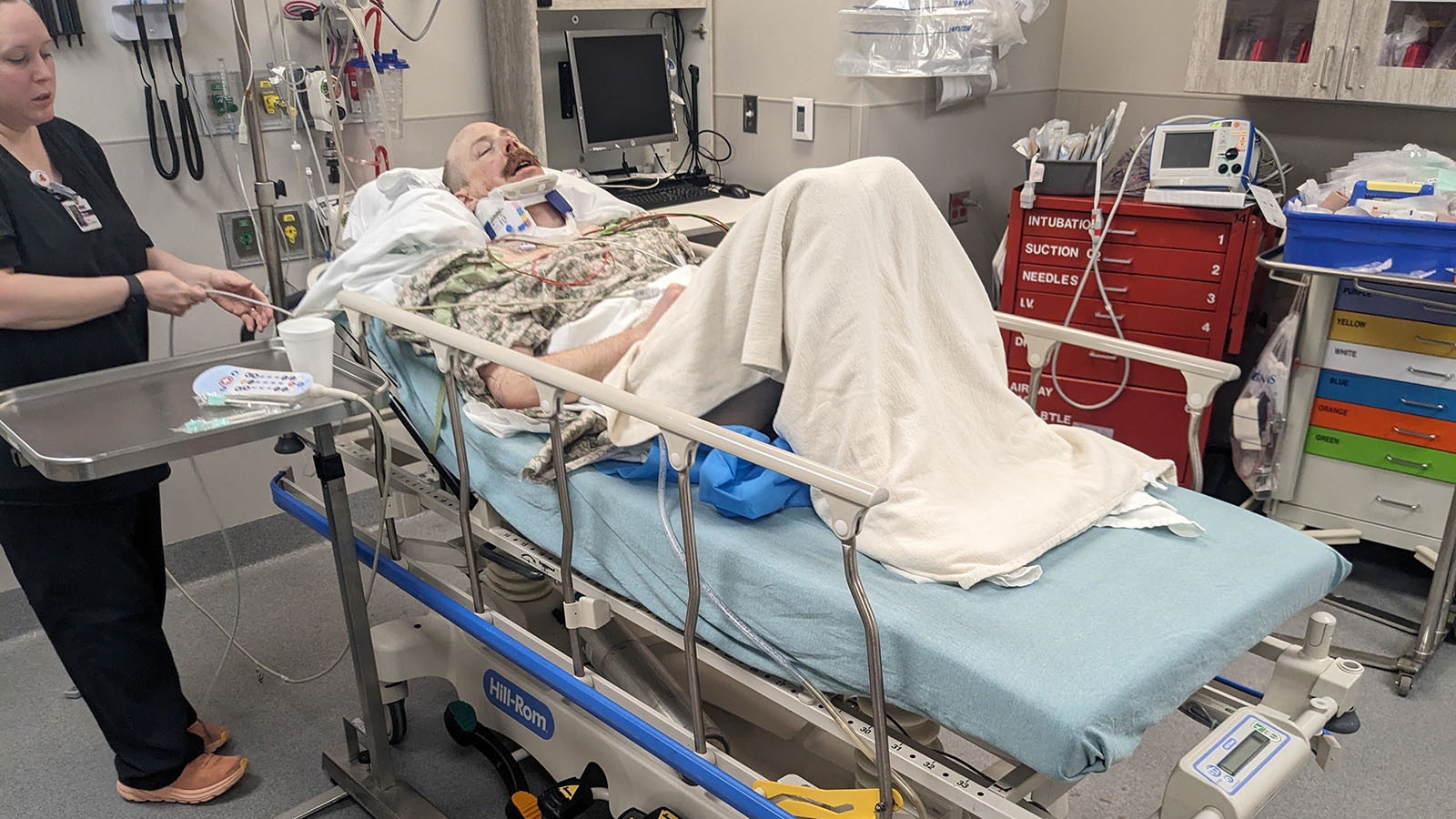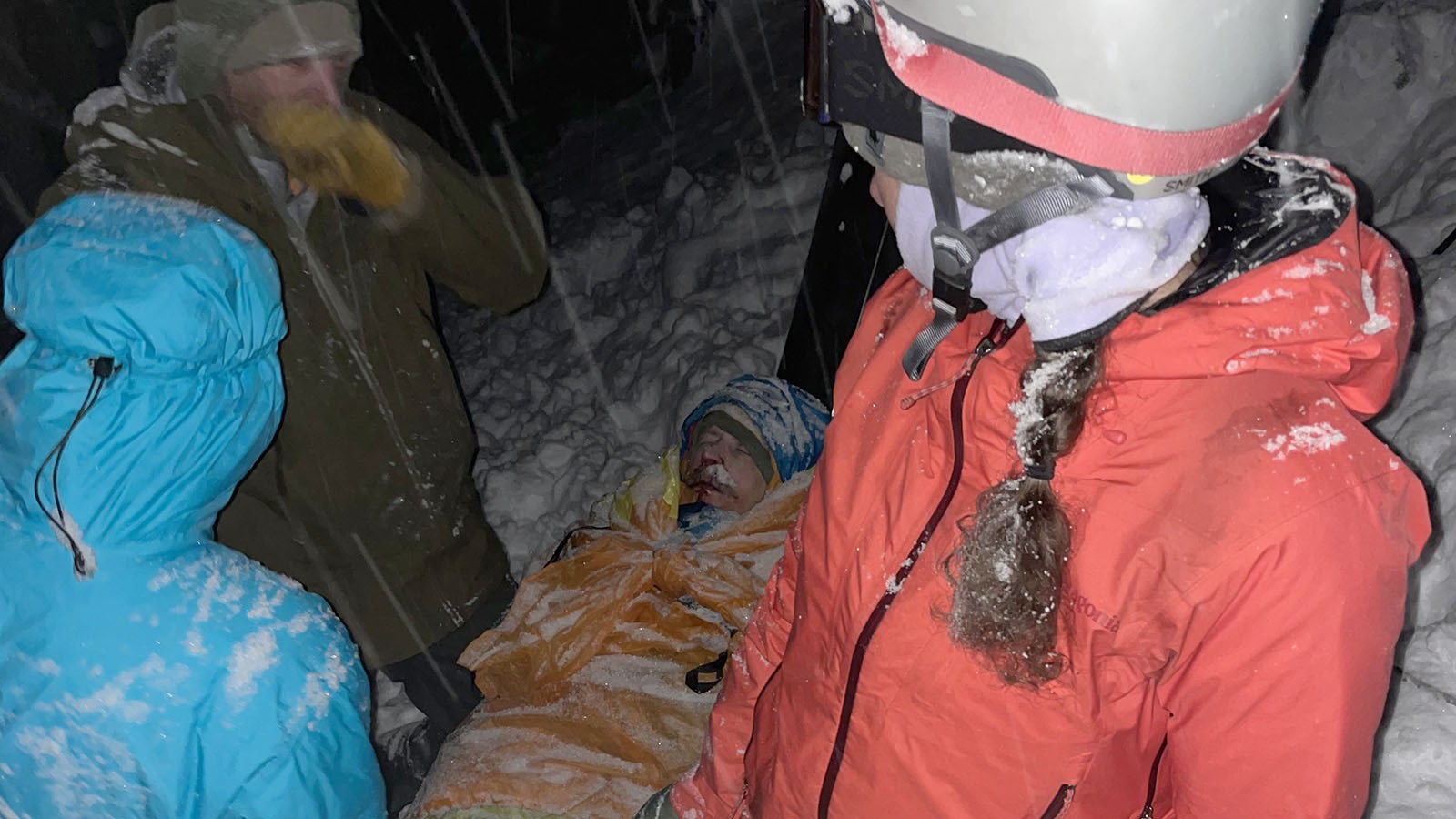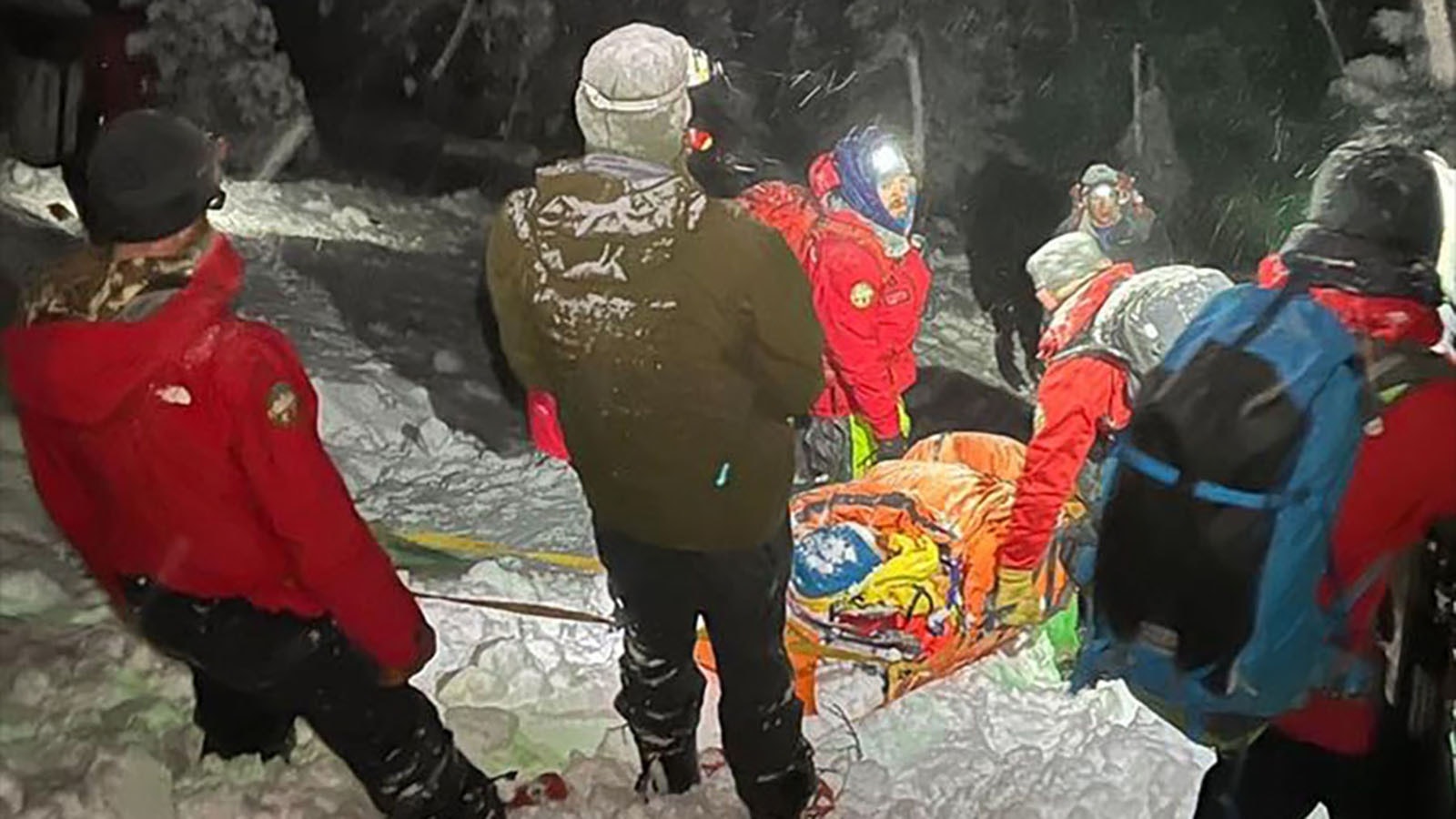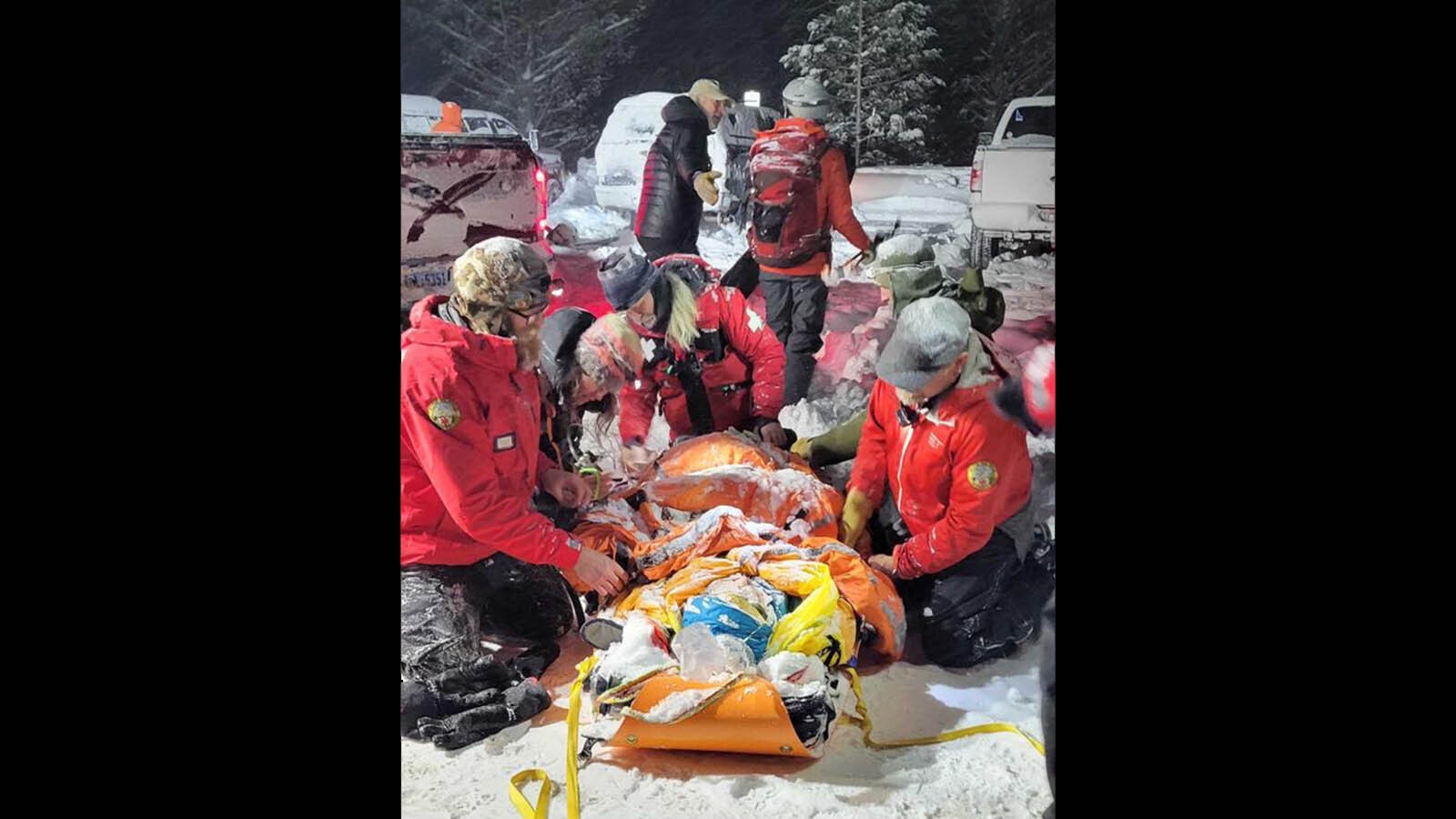Jan. 12, 2024, is a date that will likely remain forever carved in Travis Halverson’s memory as the day he was swept up in an avalanche while skiing just outside Wyoming.
With the help of his girlfriend, his gear and some good fortune, Halverson survived despite breaking 10 bones in his spine, ribs, sternum and jaw, as well as a likely concussion.
Although he has no memories of it, what he and others determined is that after triggering the slide, Halverson was flung for about 600 vertical feet down a slope through snow and trees like a ball in a Plinko board.
Critical to note about the slide is that Halverson is no novice when it comes to the backcountry. He’s been skiing in the backcountry for more than a decade and has some notable achievements under his belt such as summiting and skiing Mount Denali in Alaska.
Sometimes, experience can be more of a curse than a blessing.
Like any activity in life that carries risk, one can become gradually desensitized to its potential dangers when exposed to the risk many times. Halverson said it wasn’t that he became overly confident about avalanches, but gradually became more comfortable with the risks they present.
“The first time you do it you’re hyper aware of it and it probably affects you more,” he explained about triggering a slide. “Each time you do that same thing, you just become more comfortable with that risk and just able to push it in the back of your mind a little more.”
How Did It Happen?
The avalanche caught up with Halverson on Jan. 12 on the Idaho side of Teton Pass, just outside of Jackson in Stateline Canyon.
Halverson doesn’t remember much about the accident and what led up to it, but what he learned from it is much more valuable.
The conditions on Jan. 12 were considered high risk for avalanches, with dumping snow following on the heels of an inordinately dry November and December. This type of weather pattern usually creates an unstable snowpack that can lead to avalanches.
Halverson, who lives right across the border from Wyoming in Victor, Idaho, decided to catch a few turns with his girlfriend after getting off work in the mid-afternoon.
Despite the inherent risks, they were unconcerned as they skied there earlier in the week and found many cars parked in the trailhead parking lot when they arrived on the day of the avalanche.
In hindsight, Halvorson said they were “just ignoring the warning signs, maybe becoming complacent having skied the slope earlier in the week.”
Around the time they got to the run is when Halverson’s memories evaporate, although he was never officially diagnosed with a concussion. This leaves him with some uncertainty about how to feel about the experience, comparing it to going to sleep and waking up in a new reality.
Instead of following where other people had skied that day to their left, they decided to venture into a steeper, untracked slope to their right. Halverson said he and his girlfriend discussed and acknowledged the risk of taking this route.
From there, he remembers nothing about the skiing and relies on what his girlfriend and other people have told him to fill in the blanks about what happened next.
A Sluff Of Snow
Halverson dropped in first and fell quickly out of sight from his girlfriend. Total silence followed.
When he failed to call out on the radio to his girlfriend that he had completed his run, she knew something was wrong. She followed his tracks and got to a place where she found a significant amount of loose, disturbed snow, known as a sluff, a common sign that an avalanche has occurred.
She started to work her way down the mountain and turned her avalanche beacon over to search mode.
Soon after, she found Halverson partially buried in the snow and tucked behind a tree with his bright orange airbag deployed. It’s unknown whether he activated the airbag or it initiated on its own. An airbag is a quick-inflating device worn on one’s back that can keep someone from becoming completely submerged in an avalanche, not unlike an inflatable water toy.
“Easily could have been worse,” he said. “The helmet and airbag probably protected my head enough where I was able to make it through.”
Halverson was completely immobile and missing the skis, goggles and helmet he had started the run with, all of which got torn off him by the merciless slide viciously throwing him down the mountain.
They won’t know until the snow melts in the spring what kind of damage was waged on his ski gear, all of it still up on the mountain.
To say Halverson is lucky to have not suffered worse injuries or die is an understatement.
“Very lucky to be alive, very appreciative of all the first responders and folks that helped me get out of there alive,” he said.
Lessons Learned
Although he was well-prepared in a number of ways, when reflecting on the day, Halverson admits there were some mistakes made that could have proved fatal. It’s a conclusion that’s grown over time as he didn’t believe he did anything wrong immediately after the accident, and even worried that he wasn’t moved enough by it.
He had been caught in one small avalanche before in Colorado under low-risk conditions, an event he viewed as an extremely isolated situation.
The recent avalanche, however, has given him pause.
“Right off the bat I almost felt like it was a fluke,” he said. “The further I go, the further I am away from the event, it’s easier to find the flaws.”
First, he questions their decision to ski the slope they did, a run with a roughly 36-degree slope angle. Any pitch steeper than 25-30 degrees generally should be avoided during high avalanche conditions, which they were fully aware of.
“I just kind of pushed that out of my mind,” Halverson said of the risks.
He also believes they were in too much of a hurry that day, rushing their pace and decisions so they could make it back to their car before it got dark.

The Rescue
His girlfriend initiated an SOS call on her emergency satellite device but luckily had just enough phone service to place a call for emergency rescue on her cellphone. Typically, there is no cellphone service in backcountry situations, making satellite phones a critical safety item for backcountry travel.
The couple had also taken multiple avalanche and first aid courses. It was this experience that helped her stay calm and alert others to what had happened instead of panicking and solely focusing on his injuries.
“I think she could have handled it solo, but getting the other folks there was a huge benefit,” Halverson said. “She did everything she could, and it went as well as it possibly could have.”
Halverson also prepared well by carrying an emergency blanket with him that day he had never used before, a critical safety net when considering his day was extended by an unexpected five hours.
His girlfriend also called over a couple nearby skiers immediately after discovering Halverson, one of whom happened to be a member of the Teton County Search and Rescue (SAR) of Idaho. Another group that came over were three NOLS wilderness instructors.
“Pretty educated people that were well prepared,” Halverson said.
Halverson was stabilized as the day turned to night and temperatures quickly started to dip. Because of ongoing storm, Teton County SAR was unable to do a helicopter rescue, so they had to make their way a mile and a half up the mountain to where he was on snow and bring him down on an inflatable sled.
It’s this part in the story where Halverson’s memory returns.
Foggy images of being pulled down the mountain and through the woods on the sled, and more so the visceral pain wracking his body when dropped down and over various downed logs in the low-snow conditions, is a memory that reunites him to the storyline of events and new reality he woke up to.
Today, Halverson is still recovering from his injuries, but earlier this week skied his first day in the backcountry since the accident.
He plans to keep skiing the way he’s done before, but with a new awareness for the inherent risks that come with the sport he deeply loves.
“Having to sit there without skiing gives you time to think about it a little better,” he said.
Contact Leo Wolfson at leo@cowboystatedaily.com

Leo Wolfson can be reached at leo@cowboystatedaily.com.








